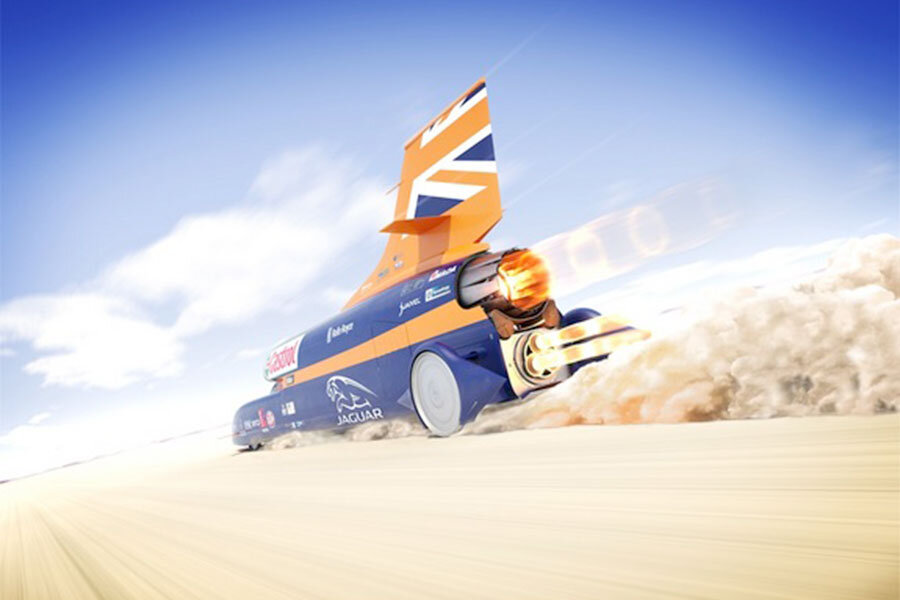Supersonic, rocket-powered car could break land speed record
Loading...
To the average person, 800 m.p.h. (1,290 km/h) might seem blisteringly fast. But for a rocket-powered car, that's pretty slow — at least to Mark Elvin, lead engineer on a project that aims to break the world land speed record with a supersonic car.
The so-called Bloodhound car is designed to go superfast. The goal is to accelerate to 1,000 m.p.h. (1,609 km/h) during the ultimate test drive, which is scheduled to take place in 2016. But first, the car will undergo a series of tests at lower speeds — and even those test drives could break the existing land speed record.
The Bloodhound SSC organization, which is supervising the car's design and build, recently released a "model kit" that shows the different pieces of the vehicle. [See photos of the rocket-powered Bloodhound car]
"You may walk into the workshop and see the chassis sitting on the bed where we're building it, but that's not all we've got," Elvin told Live Science. "It's a really good way of illustrating to the public that we're deadly serious about this, and we've got a lot of car there."
The team hopes that the test runs, slated to take place this summer and fall, will drum up more interest in the project.
Testing in South Africa
Bloodhound will sniff out the current land speed record of 763 m.p.h. (1,227 km/h), held by Thrust SSC, a United Kingdom-based team that was led by Richard Noble, the current leader of the Bloodhound project. Noble held the land speed record between 1983 and 1997 . Andy Green, the former driver for Thrust SSC, will also drive the Bloodhound car.
If all goes according to plan, Bloodhound will do runway testing in the United Kingdom at speeds of up to 200 m.p.h. (322 km/h) in the summer. Next, the team will bring the rocket-powered car to the Kalahari Desert in South Africa to test the vehicle at speeds of up to 800 m.p.h. The planned 2016 test drives will also take place in the Kalahari Desert.
But preparing the South African site is no easy task, according to the team. At such high speeds, even a single stone can pose a big threat to the car, so roughly 6,600 tons of pebbles will have to be removed from the testing strip to prevent any problems.
The car has been simulated in computer programs, which has helped the engineers make some major design changes. About two years ago, engineers discovered a slightly raised underside to the nose that would generate a little more than a ton of lift at the front of the car. Concerned about how that could affect the car's performance, engineers flattened the underside to reduce the lift problem.
'Nobody's been to these speeds'
While the 45-member Bloodhound team thinks it has planned for most of the potential problems the car could encounter, Elvin said there could be unforeseen obstacles. "Nobody has run on this desert before," he said. "Nobody has run a car like this, and nobody's been to these speeds."
When the car does its runs on the desert this year, it will take about 2 minutes from start to stop. The car's rocket engines will fire for about 20 seconds in that time, giving the car 60 seconds to reach top speed and another 60 seconds to slow down. The acceleration will produce a sensation of roughly 2.5 times Earth's gravity, which is just slightly less than what space shuttle astronauts feel during their launch into orbit.
Officials from a local sporting body will be on hand to verify the timing, which will be done in a manner approved by the Fédération Internationale de l'Automobile (International Federation of the Automobile), Formula 1's governing body.
Follow Elizabeth Howell @howellspace, or Live Science on Twitter @livescience. We're also on Facebook & Google+. Original article on Live Science.







